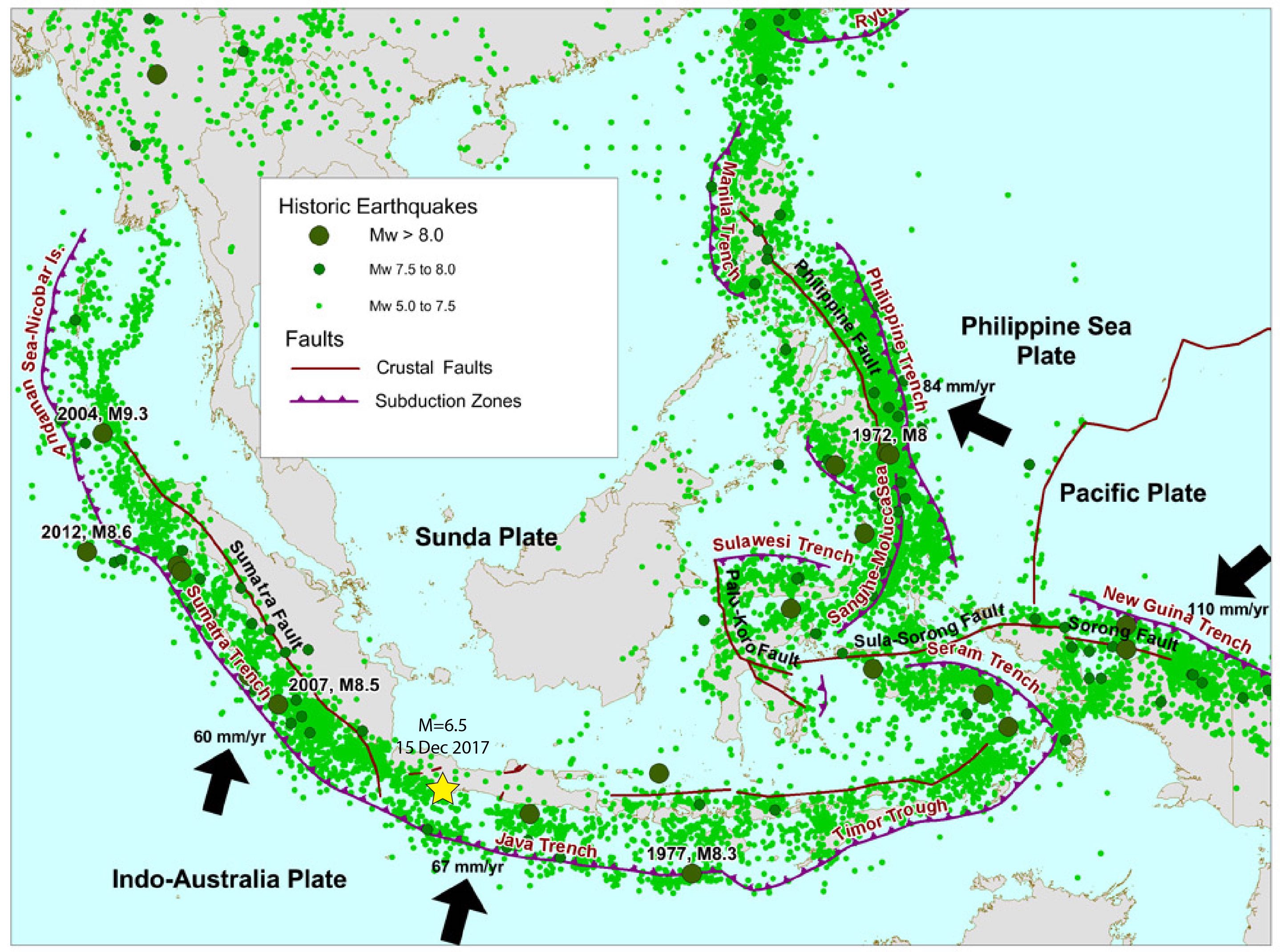By David Jacobson, Temblor

At 11:47 p.m. local time, a M=6.5 earthquake struck the coast of the Indonesian island of Java, and caused light shaking in the capital city of Jakarta, which is home to over 30 million people. Because the quake occurred at a depth of 92 km, according to the USGS, even close to the epicenter only moderate shaking was felt. It is because of this, that the USGS PAGER system estimates that damage should remain minimal and that there should be few to no fatalities. However, very few reports have come in so far so this cannot be confirmed.

The island of Java lies on a convergent plate boundary where the Australian plate subducts beneath the Sunda plate at the Java Trench at a rate of approximately 67 mm/yr. This is part of the Sunda Arc, which extends for over 5,600 km from the Bay of Bengal, southeast of India, to near East Timor. Because of this, Indonesia is an extremely seismically active country, which is also riddled with active volcanoes. Based on the Slab 1.0 model, which shows the depth of subduction zones around the world, and is viewable in Temblor as megathrusts, this quake likely struck below the subduction interface. At this location, the slab is estimated to be at around 80 km depth, while both the USGS and European-Mediterranean Seismological Centre have the quake below that. This, coupled with the USGS focal mechanism, which suggests that the earthquake had significant components of both strike-slip and compressional motion, indicates that this was an intra-slab event. In a true subduction zone event, you would expect an also pure compressional earthquake.

In terms of the seismicity of the region, the Java section of the Sunda Arc is considered relatively quiet compared to the Sumatra section. The Sumatra section is is where the M=9.1 Boxing Day earthquake in 2004 struck, killing over 200,000 people. Nonetheless, earthquakes at moderate depths near Java are quite common, especially within the subducting Australian plate, which is where today’s quake appears to have occurred. Therefore, while today’s quake may have given local residents a shock, it should come as no surprise, given the seismicity and tectonics of the region.

References
USGS
European-Mediterranean Seismological Centre (EMSC)
- Earthquake science illuminates landslide behavior - June 13, 2025
- Destruction and Transformation: Lessons learned from the 2015 Gorkha, Nepal, earthquake - April 25, 2025
- Knock, knock, knocking on your door – the Julian earthquake in southern California issues reminder to be prepared - April 24, 2025
